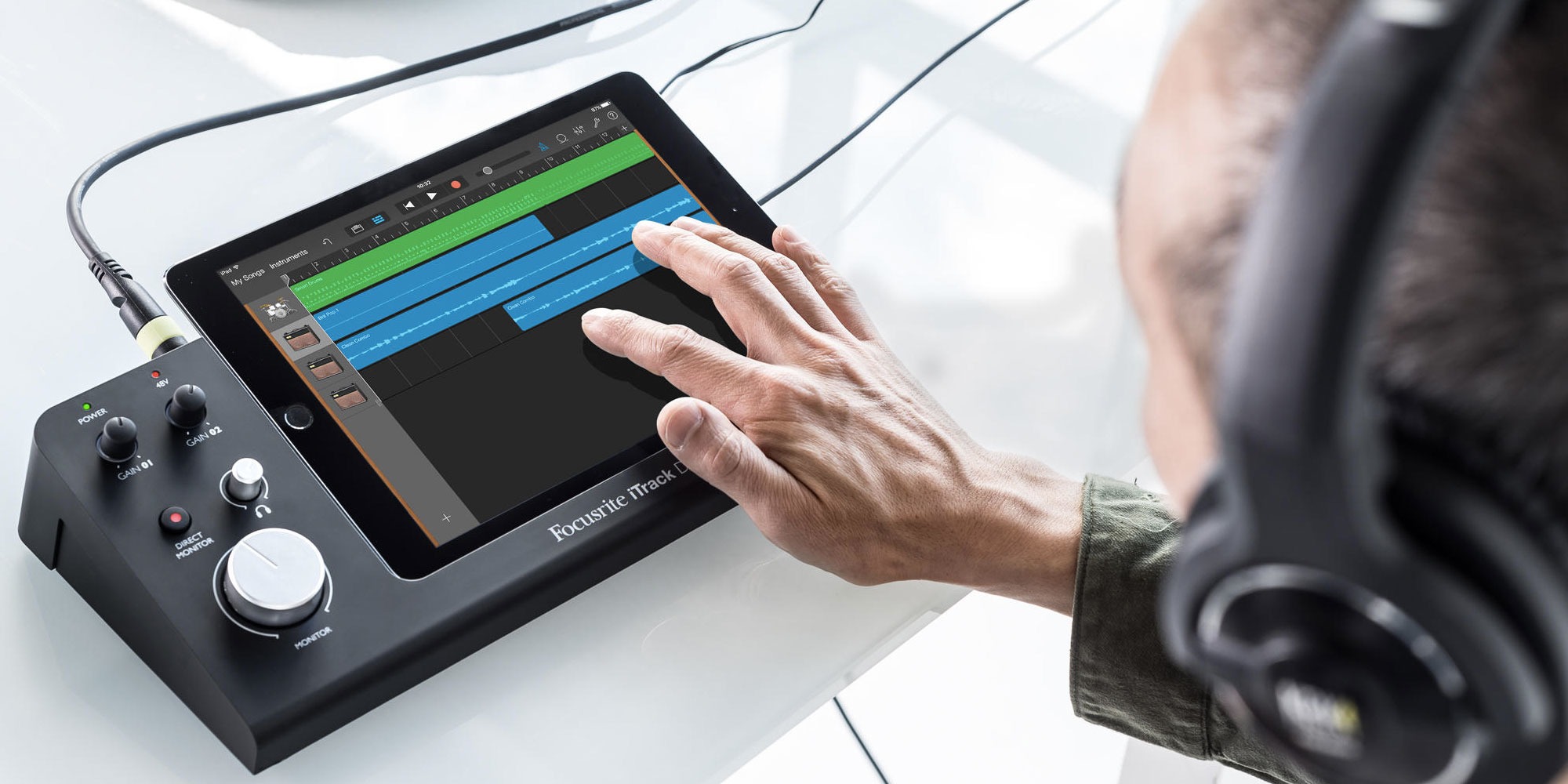
Just about everybody has a smartphone these days, and most major audio and technology manufacturers have been quick to capitalize on the mobile recording trend with new hardware and accessories. Technology that previously cost thousands of dollars, or had to be connected to a desktop, now can be used in almost any environment on a mobile device for a fraction of the cost.
The ability to capture audio and either edit it on a mobile device or import it into your favorite DAW offers recordists yet another tool in their audio toolbox when it comes to creative audio possibilities. And, with the proper interface and microphone choices, a mobile recordist has the opportunity to be just as creative and effective as the traditional studio engineer.
But while mobile recording is getting easier and more ubiquitous, it’s not yet plug-and-play, and there are unique compatibility considerations you should be aware of when making purchase decisions. This article will explore a swath of mobile device recording options to help you understand the necessary components of a mobile rig, as well as some real world recording considerations.
Windows, iOS and Android Recording Interfaces
Windows, iOS and Android offer many tablet and smartphone platforms and, just as in the traditional audio recording world, they require interfaces and microphones.
For iOS, there are several interfaces for iPhone and iPad, including:
- the PreSonus Audiobox iOne and iTwo models
- Apogee Duet USB Audio Interface
- The Griffin Studioconnect
These interfaces are very similar to traditional interfaces, except that connectivity is via Apple’s MFi (Made for iPhone/iPod/iPad) protocol. The Apple MFi program allows for the creation of compatible equipment for iOS devices, including USB, 30-pin, Lightning Connector.
If recording with a Windows or Android device, the Shure MVi and IK Multimedia iRig are models to consider since they support both platforms as well as iOS.
In addition, there are MIDI interfaces available, such as:
iPad Recording Docks
Docks, which offer expanded connectivity options and greater stability, also are a convenience you should consider. There are several for the iPad, including the 24-bit/96kHz iTrack Dock from Focusrite, which includes preamps, line/DI capacity and MIDI connectivity for the iPad.
There are also analog inputs included for use with traditional microphones as well as phantom power (48V). These docks are a great way to integrate an interface without the need for a separate cable/interface combo.
Windows, iOS and Android Microphones and Mixers
Microphones are another component to a mobile device setup. Apple-specific models with Lightning Connectors, such as the Shure MV88 are available, along with affordable cross-platform USB models, such as the IK Multimedia iRig.
XY microphones, similar to the mobile recording models that preceded smartphones, are also available for stereo recording. Similar to traditional microphones, mobile device microphones are also available with condenser modules and have different polar pattern options, including cardioid and omnidirectional.
There are also live sound mixers and controllers available, such as the Mackie DL1608, which is compatible with iPad, and the Yamaha AG06, a six-channel USB Interface with 24-bit/192kHz Resolution and Built-in DSP, which is compatible with Mac, PCs and iPad.
In all, one can have the similar interface and microphone options available for mobile device recording as in the traditional studio, albeit for a lower cost and minimal difference in sound quality.
Mobile Recording Considerations
As with traditional recording methods, there are some considerations for mobile device recording. First, it’s best to get acquainted with the mobile device software audio settings on iOS, Android, or Windows Mobile. These settings will ultimately affect the audio quality, depending on the music making app being used for recording.
Within the app being used, and there are many on the market, there will likely be more settings and adjustments that can be made to affect sound quality. If it’s a DAW app, such as Auria Pro, a user can expect the ability to have as much control over the sound as with computer DAW software. However, there are several more apps on the market that are basic, but can still suffice for music production needs.
Sound quality should still be part of the conscious decision-making at this point. Items like noise reduction, mic placement and line levels should all be thought of when recording with mobile devices. Also, you will want to disable smartphone or tablet notifications, so they don’t bleed into recordings.
Recordists also should also be aware of noise, fans and any other distractions, and ensure the smartphone or tablet is fully charged so that it does not run out of power during recording. Making regular backups also is a critical consideration. Lastly, damaged cables may cause issues so it’s important to check them frequently and have spares.
RELATED ARTICLE
ABOUT THE AUTHOR: Teri Grossheim
Teri Grossheim is a musician, audio whiz and IT professional based in Chicago. She holds a B.M in recording technology and music business from the University of Wisconsin - Oshkosh and an M.S. in music technology from Indiana University. Teri has recently played drums in Chicago indie/garage four piece Two Carolines and, in addition to writing for Reverb, works as a systems engineer for JAMF Software.










